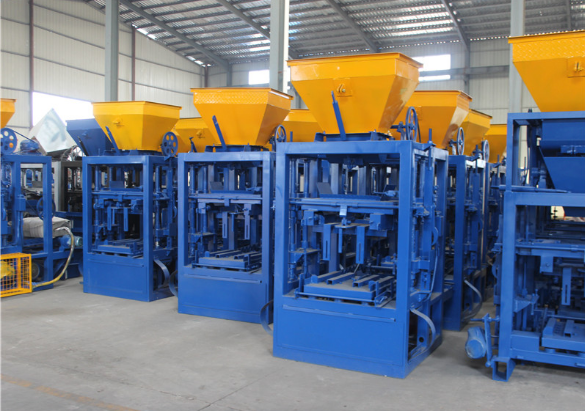What Is the Purpose of Brick Making Machine?
The purpose of a brick making machine is to manufacture bricks or blocks, which are essential building materials used in construction. These machines play a crucial role in the construction industry by producing bricks efficiently and cost-effectively. In this comprehensive guide, we will explore the various aspects of brick making machines, including their purpose, working principles, components, and the types of bricks they can produce.
Purpose of Brick Making Machine
Brick making machines are designed to serve several important purposes in the construction sector and related industries:
1. Mass Production of Bricks: The primary purpose of a brick making machine is to mass-produce bricks or blocks. These machines can manufacture a large quantity of bricks in a relatively short period, meeting the high demand for building materials in construction projects.
2. Consistency in Size and Shape: Brick making machines ensure that the bricks produced are consistent in size and shape. This consistency is crucial for achieving structural integrity and aesthetics in buildings.
3. Customization: These machines can be adjusted to produce bricks of different sizes, shapes, and colors, allowing builders to meet specific project requirements and design preferences.
4. Cost Efficiency: Brick making machines help reduce labor costs and increase production efficiency. They automate the brick production process, reducing the need for manual labor in brick manufacturing.
5. Quality Control: Using a brick making machine allows for precise control over the composition and compression of the bricks, resulting in higher quality and durability.
6. Environmental Sustainability: Some modern brick making machines are designed to use recycled materials, such as fly ash, which can be an environmentally sustainable option. These machines contribute to reducing the environmental impact of brick production.
7. Versatility: Brick making machines can produce a variety of brick types, including clay bricks, concrete bricks, fly ash bricks, and more. This versatility makes them suitable for a wide range of construction applications.
Working Principles of Brick Making Machines
Brick making machines operate based on several fundamental working principles. The specific design and operation may vary depending on the type of brick making machine, but the core principles remain consistent:
1. Material Preparation: The first step in the brick making process involves the preparation of the raw materials. This typically includes the mixing of materials like clay, cement, sand, and other aggregates, depending on the type of brick being produced. Water is added to form a homogenous mixture.
2. Molding: In this step, the prepared material is loaded into the machine's mold or chamber. The machine then compresses the material, forming it into the desired brick shape. The design of the mold corresponds to the size and shape of the bricks to be produced.
3. Compaction: The machine uses various methods to compact the material within the mold. This may involve hydraulic pressure, vibration, or a combination of both. Compaction ensures that the bricks are densely packed and free from voids, enhancing their strength and durability.
4. Drying: Depending on the type of brick, the bricks are allowed to dry for a specific period after molding. This is especially important for clay bricks, as it helps reduce moisture content and prevents cracking during the firing process.
5. Firing (For Clay Bricks): Clay bricks are typically fired in kilns at high temperatures to harden and strengthen them. The firing process transforms the raw clay into a durable brick. Modern brick making machines may incorporate brick kilns within the same system, streamlining the entire process.
6. Cooling and Stacking: After firing (if required), the bricks are allowed to cool, and then they can be stacked for storage or transportation.
7. Quality Control: Throughout the entire brick making process, quality control measures are in place to ensure that the bricks meet the desired specifications, including size, shape, strength, and uniformity.
Components of Brick Making Machines
Brick making machines consist of various components that work together to produce bricks efficiently and effectively. The specific components may vary depending on the machine's design and type. However, here are some of the key components commonly found in brick making machines:
1. Hopper or Feeder: This component is responsible for feeding the raw material mixture into the machine's mold or chamber. It can be manually loaded or automated, depending on the machine's design.
2. Mold or Die: The mold or die determines the shape and size of the bricks to be produced. It is a crucial component that is changed to produce different types of bricks.
3. Compaction Mechanism: The compaction mechanism, which can be hydraulic or mechanical, compacts the material within the mold, ensuring that the bricks are formed without voids.
4. Vibrating Table (Optional): In some brick making machines, a vibrating table is used to further compact the material and remove air bubbles.
5. Hydraulic System: Many modern brick making machines are equipped with hydraulic systems that control the pressure applied to compact the material in the mold.
6. Control Panel: The control panel allows the operator to set parameters such as pressure, vibration, and molding time, ensuring that the machine operates according to the desired specifications.
7. Conveyor System (Optional): Some brick making machines are equipped with conveyor systems to transport the freshly molded bricks to the drying or firing area.
8. Kiln (For Clay Bricks): If the machine is designed to produce clay bricks, it may have an integrated kiln for firing the bricks.
9. Cooling and Stacking Area: After the bricks are molded or fired, there is an area for cooling and stacking the finished products.
Types of Bricks Produced by Brick Making Machines
Brick making machines are versatile and can produce a variety of brick types to meet different construction needs. Some of the common types of bricks produced by these machines include:
1. Clay Bricks: Made from clay and typically fired in a kiln, clay bricks are known for their durability and natural aesthetic appeal. They are commonly used in both residential and commercial construction.
2. Concrete Bricks: These bricks are made from a mixture of cement, sand, aggregates, and water. They offer high compressive strength and are widely used in various construction projects.
3. Fly Ash Bricks: Fly ash bricks are an environmentally friendly alternative to clay bricks. They are made from fly ash, cement, and other materials. These bricks are lightweight and offer good insulation properties.
4. Cinder Blocks: Cinder blocks, also known as concrete masonry units (CMUs), are larger rectangular or square blocks made from concrete. They are commonly used for load-bearing walls in construction.
5. Hollow Blocks: Hollow blocks are typically larger than standard bricks and have hollow cavities within them. They are used in the construction of walls and foundations, providing insulation and reducing weight.
6. Interlocking Bricks: These bricks have unique designs that allow them to interlock with one another, eliminating the need for mortar. They are often used for building walls, especially in regions prone to seismic activity.
7. Paver Blocks: Paver blocks are used for creating decorative pavements and outdoor surfaces. They come in various shapes, colors, and patterns, enhancing the aesthetics of driveways, walkways, and patios.
8. Compressed Earth Blocks (CEBs): CEBs are made from a mixture of earth and a small amount of cement. They are sustainable and cost-effective and are used in eco-friendly construction.
Conclusion
In summary, brick making machines serve the fundamental purpose of producing bricks and blocks used in construction. These machines automate the brick manufacturing process, resulting in efficient, cost-effective, and high-quality brick production. They are versatile and can produce various types of bricks, ranging from traditional clay bricks to modern, environmentally friendly options like fly ash bricks. By meeting the demand for reliable and consistent building materials, brick making machines are indispensable in the construction industry and contribute to the construction of durable and sustainable structures.
If you want to know more information about brick making machines, please click on the image below to get a free quote:















